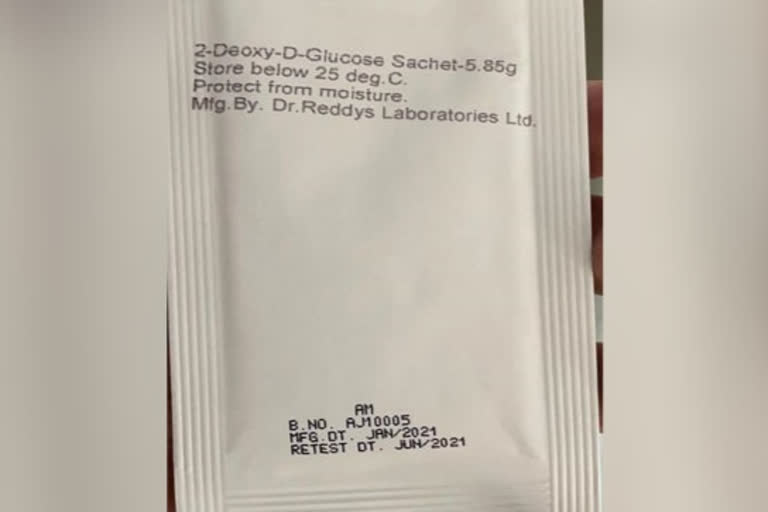New Delhi: The first batch of 10,000 doses of 2DG medicine for treating COVID-19 patients would be launched early next week, informed Defence Research and Development Organisation officials on Friday.
The official informed, "The first batch of 10,000 doses of 2DG medicine for the treatment of COVID-19 infected patients would be launched early next week and will be given to patients."
"The drug manufacturers are working on ramping up the production of the medicine for future use. The drug has been developed by a team of DRDO scientists including Dr Anant Narayan Bhatt", informed DRDO officials.
Yesterday, Karnataka Health Minister Dr K Sudhakar visited the DRDO campus. DRDO scientists briefed Minister about the 2-DG drug which could be a game-changer in the COVID-19 battle.
ALSO READ: DRDO conducts maiden trial of Python-5 Air-to-Air Missile
"Dr K Sudhakar was briefed by scientists about the ongoing efforts at the premier research organisation to find solutions to tackle the pandemic. This comes a day after the Minister's interaction with another premier science institute, the IISc", informed a release by the state government.
The 2-DG drug developed by DRDO is a big breakthrough and could be a game-changer in the battle against the pandemic as it helps in faster recovery of the hospitalised patients and reduces oxygen dependence.
PM-CARES fund will procure 1.5 lakh units of Oxycare System at a cost of Rs 322.5 crore.
Another innovative solution, the Oxycare system reduces the workload and exposure of healthcare providers by eliminating the need of routine measurement and manual adjustments of Oxygen flow. 2-DG drug: An anti-COVID-19 therapeutic application of the drug 2-deoxy-D-glucose (2-DG) has been developed by the Institute of Nuclear Medicine and Allied Sciences (INMAS), a lab of Defence Research and Development Organisation (DRDO), in collaboration with Dr Reddy's Laboratories (DRL), Hyderabad.
OxyCare System is a comprehensive system developed by DRDO to regulate oxygen being administrated to patients based on the sensed values of their SpO2 levels.
(ANI)



